Set out on a hike at Florida’s Tiger Creek Preserve, and it won’t be long before you see a small brown lizard scuttle through the undergrowth. And while some of them might be the ubiquitous brown anole, an introduced species from Cuba, others merit closer inspection.
The dark lateral stripe along the lizard’s body might be your first clue. Or the chunky head. Or maybe the bright flash of turquoise on its flanks. It’s a Florida scrub lizard.
If you keep hiking through the pines and oak hummocks, you’ll see more scrub lizards scurry along in your wake. And some of them — in addition to brown stripes and turquoise splotches — might have small red patches behind their ears.
These splashes of color aren’t part of the lizard’s normal coloration; they’re signs of a mite infestation. And scientists working at The Nature Conservancy’s Tiger Creek Preserve are using lizard robots — yes, robots — trying to figure out if these mites helped lizards attract a mate.
Lizards of the Scrub
The Florida scrub lizard, Sceloporus woodi, is a small, brown lizard found in Central Florida. It’s one of nearly 100 lizards in the Sceloporus genus, but most of those species live in the American southwest and Mexico. The Florida scrub lizard is one of only two Sceloporus species found in the Sunshine State, where it lives in oak and sand-pine scrub ecosystems.
If you see a Florida scrub lizard scurry past you on a hiking trail, you might notice their grey-brown scales and dark lateral stripe running along the sides of their body. Males also have bright turquoise patches on their bellies and throats. But if you look closer, you’ll see that some lizards have red markings just behind their ear openings.
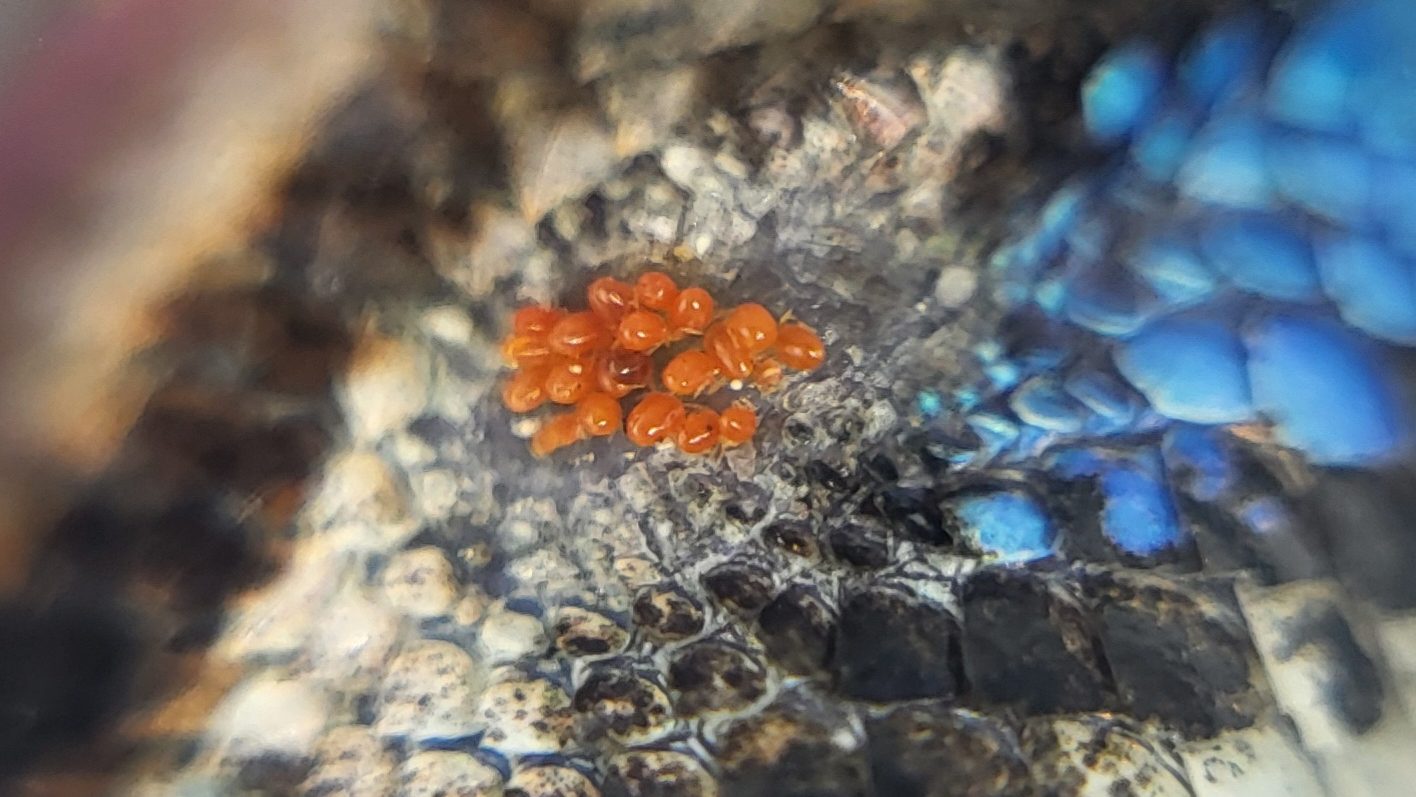
“They have these little pockets on the side of their neck, like a kangaroo pouch, and they’re filled with bright red, vibrant-colored mites,” explains Hope Abercrombie, a researcher at Arizona State University who is studying Sceloporus lizards and their relationships with various parasites, like ticks and mites. Abercrombie explains that the pouches evolved separately on different clades of lizards, but no one really knows why a lizard would evolve something that makes it easier for a parasite to live upon it.
One theory, which she’s currently testing as part of her PhD research, is that the mites confer some sort of sexual advantage. “Maybe it’s using these bright red mites like jewelry,” she says, as a way for females to advertise that they are healthy and fit, because they can withstand high parasite loads. “And she would be more desirable to mate with than a female without the mites.”
To test that theory, Abercrombie built a lizard robot.
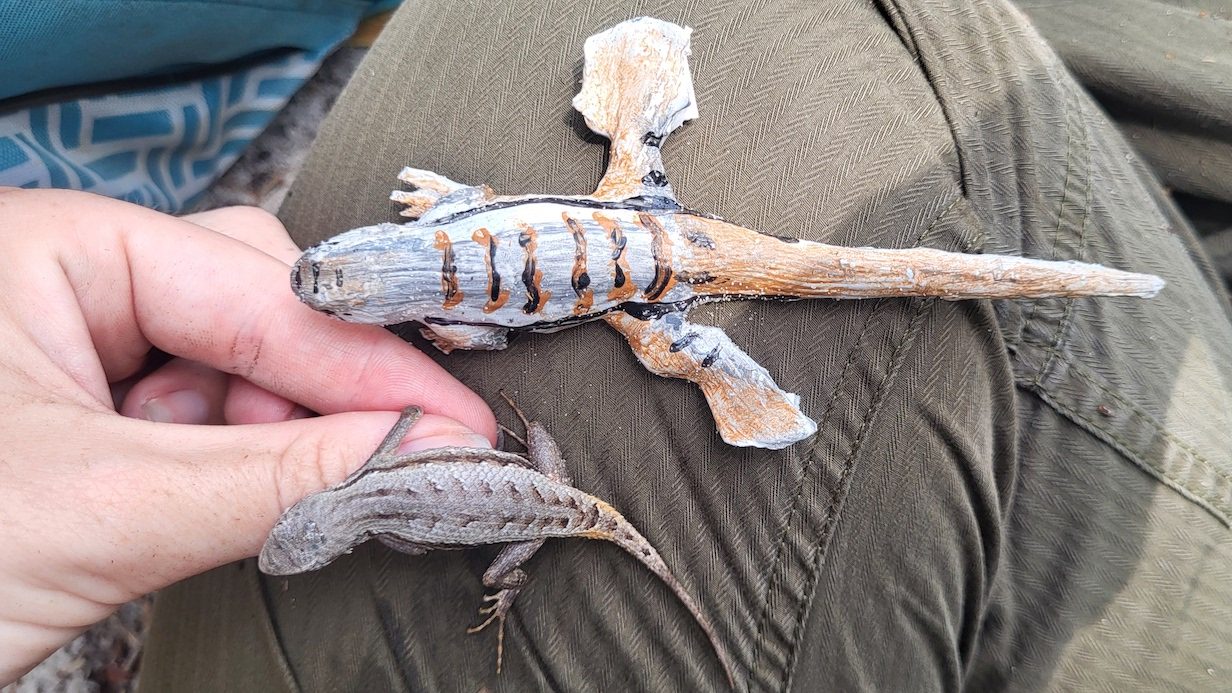
Sceloporus lizards interact with members of the opposite sex via both chemical and display signaling. Males and female will do a series of lizard push-ups to attract one another’s attention. So to mimic a sexually receptive female, Abercrombie made a silicone lizard attached to a robotic box that can be programmed to mimic the exact push-up sequence of a female S. woodi.
Abercrombie painted one robot lizard with red behind the ears, to mimic a mite infestation, and a second robot with grey paint. She then set out on the trails at Tiger Creek, locating wild S. woodi males and then seeing which robot they were more attracted to.
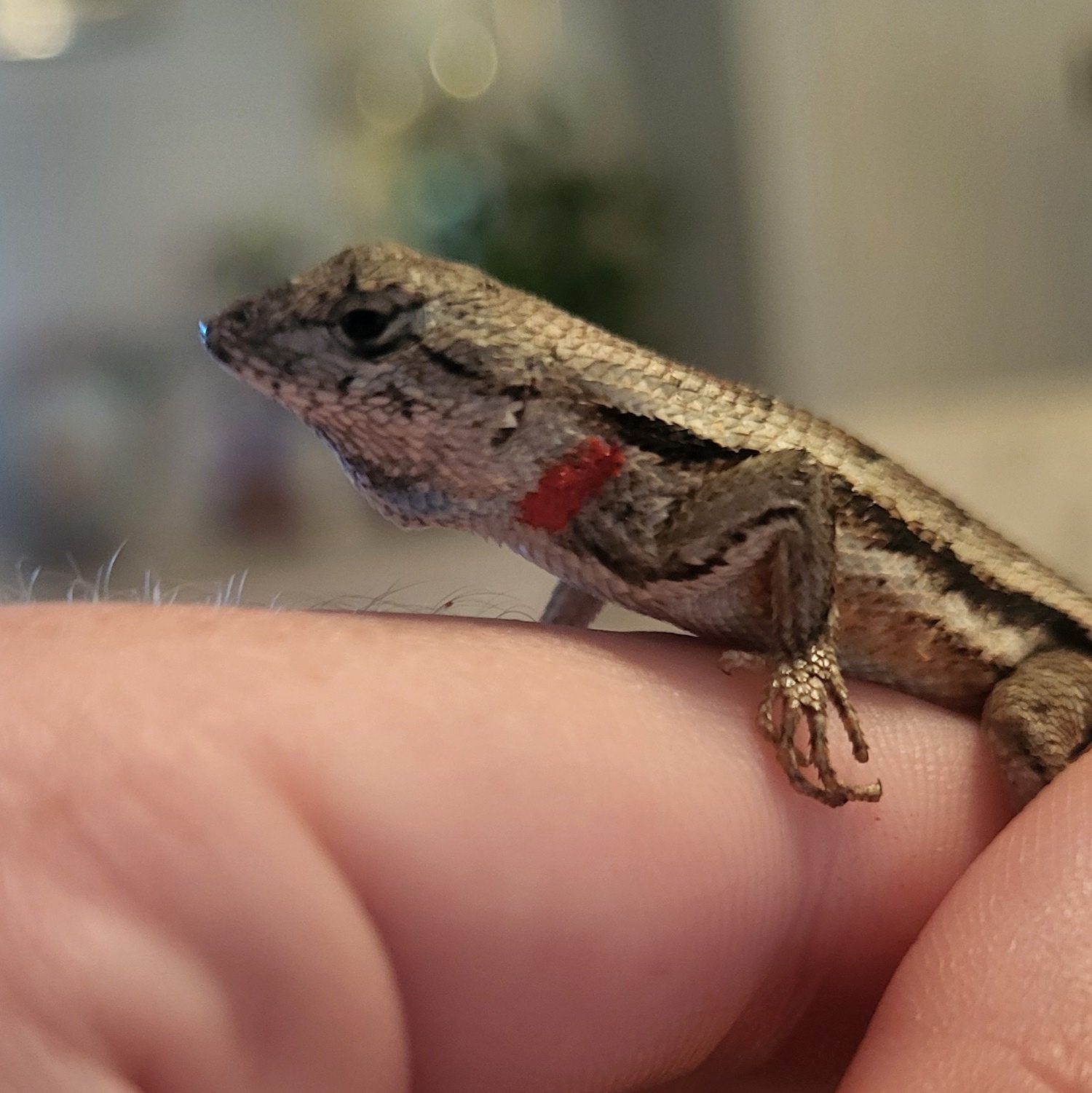
Unfortunately, those first experiments didn’t go to plan. “Sometimes the male lizard was scared of it, because the robots are a little bit bigger than the females out there, so it looks like a monster lizard in his territory.”
Undeterred, Abercrombie ditched the robots and started catching live lizard females. After a mealworm snack, she painted the sides of their necks with non-toxic paint and attached tiny harnesses to the lizards. Then she repeated the experiment, testing to see which female lizards the males were more attracted to, ones painted red (to mimic mites) or ones painted grey (as a control).
Her preliminary results, which need to be supported by additional seasons of data, suggest that the males were more attracted to females with the mite-mimicking paint.

Protecting the Lake Wales Ridge
Abercrombie’s connection to her study site began long before her PhD; she spent part of her childhood in Florida, and would spend her free time hiking. “I spent a lot of time at Tiger Creek, and I remembered seeing so many Sceloporus there,” she says. “So when I started my PhD the only real connection I had to this lizard was from seeing them at Tiger Creek, and it was the obvious place to do my fieldwork.”
Visit Tiger Creek Preserve
Learn more about Tiger Creek Preserve, where you can hike through pinelands on one of Florida’s ancient islands
Tiger Creek Preserve protects nearly 5,000 acres of land on Florida’s Lake Wales Ridge, an ancient island once separated from the mainland by a shallow sea. Today it lives on as a sandy-soiled ridge running up south-central Florida like a spine, and is the highest landmass on Florida’s mainland.
The ridge’s period of isolation from the mainland resulted in a plethora of endemic species. But this unique ecological community is also highly threatened. The Lake Wales Ridge has one of the highest concentrations of threatened and endangered plants and animals in the entire country.
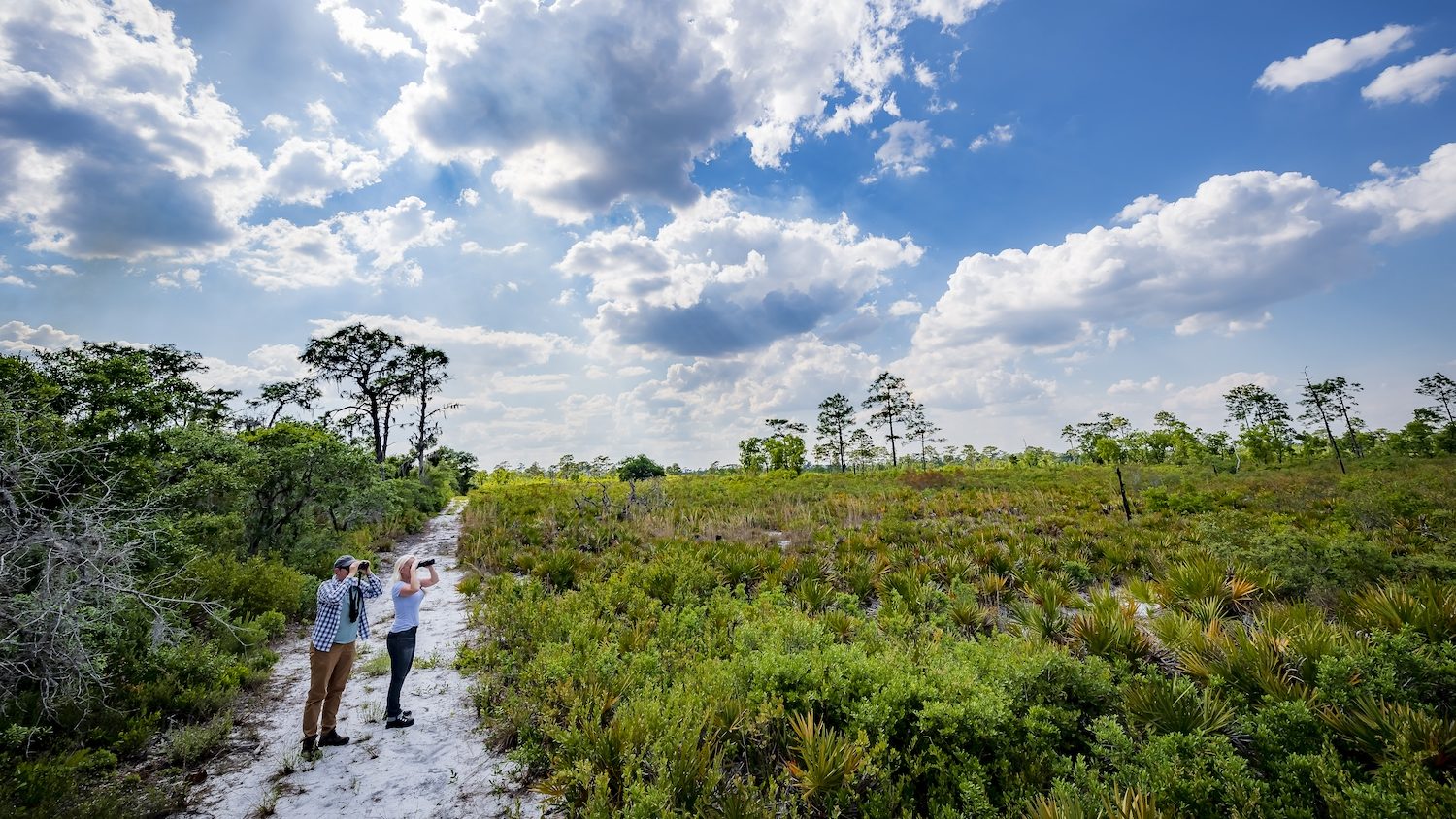
Tiger Creek is named after the blackwater stream that flows through the property. It protects hardwood swamps, hammocks, pine flatwoods, and both sandhill and longleaf pine / wiregrass habitats. Along with the Florida scrub lizard, visitors can see species like gopher tortoise, swallow-tailed kites, and bobcats.
Abercrombie hopes to return to Tiger Creek next year to gather more data on how mite infestations might influence mate selection. Her work is part of a growing body of research looking at how parasites can influence animal behavior, and potentially mutualistic relationships between parasites, hosts, and the wider ecosystem.
She also hopes to run experiments testing if the mites affect which lizards are preyed upon by birds of prey, like the red-shouldered hawk. “Birds are very visual creatures,” she says, “so I’m curious if lizards with mites are preyed upon differently.”
Until then, Abercrombie’s painted silicone lizards will sit on her shelf, waiting for her next field season at Tiger Creek.
Tiger Creek Preserve is a part of The Nature Conservancy’s Center for Conservation Initiatives (CCI) that helps to activate Florida’s preserves to elevate science, stewardship, education, and outreach. CCI and Tiger Creek Preserve staff are delighted to have this research about such a special part of the habitat we’re conserving. To learn more about Tiger Creek Preserve and TNC’s Center for Conservation Initiatives, visit www.nature.org/CCI
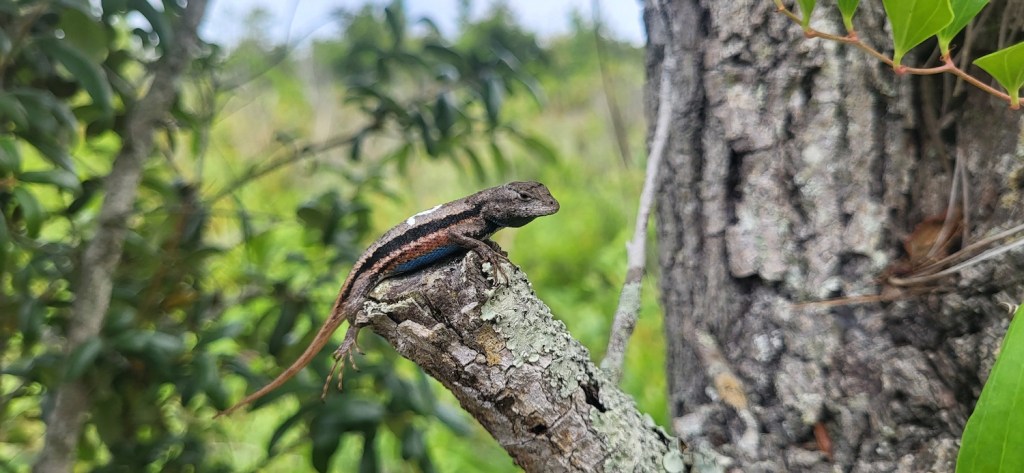



Join the Discussion